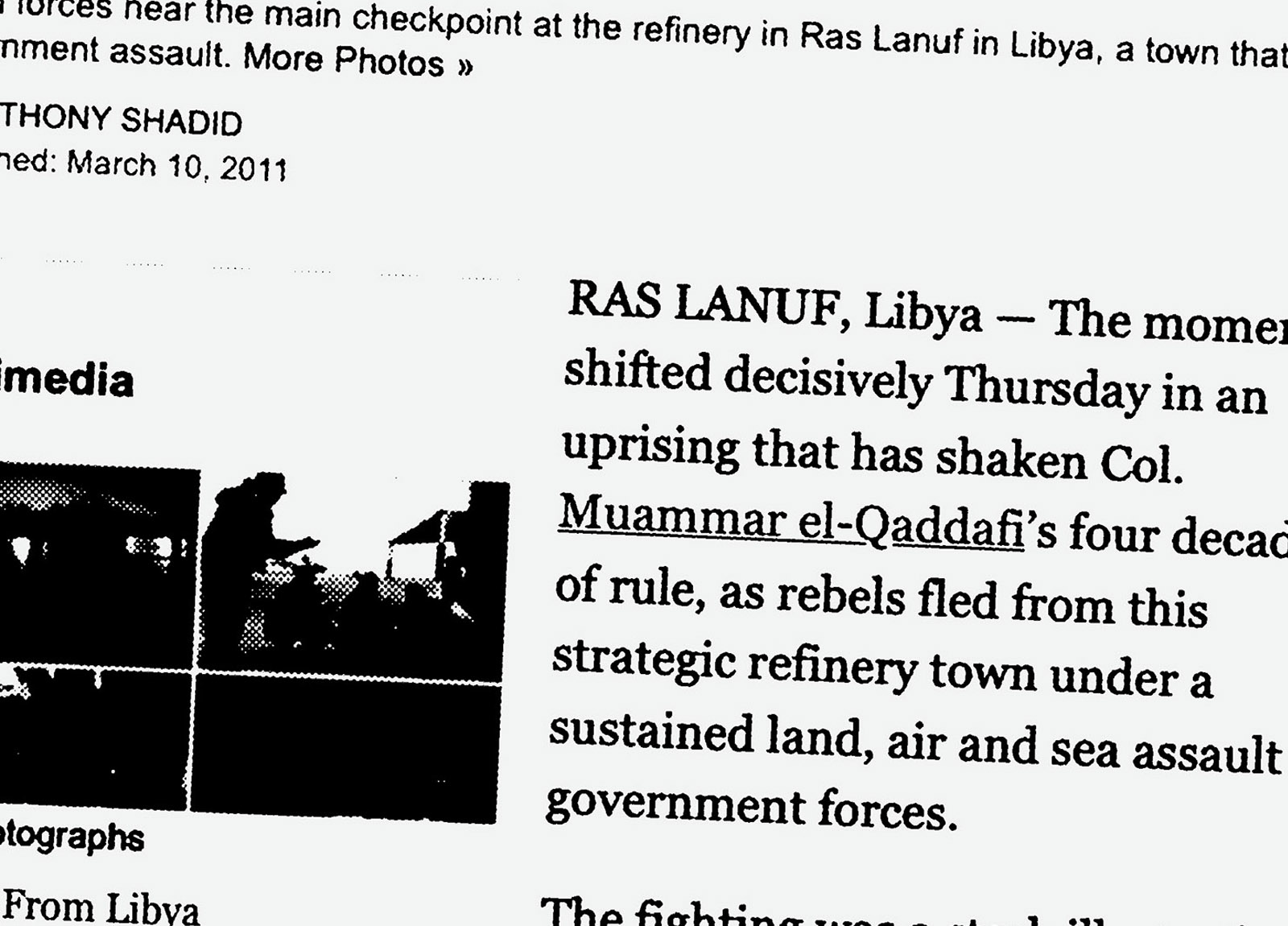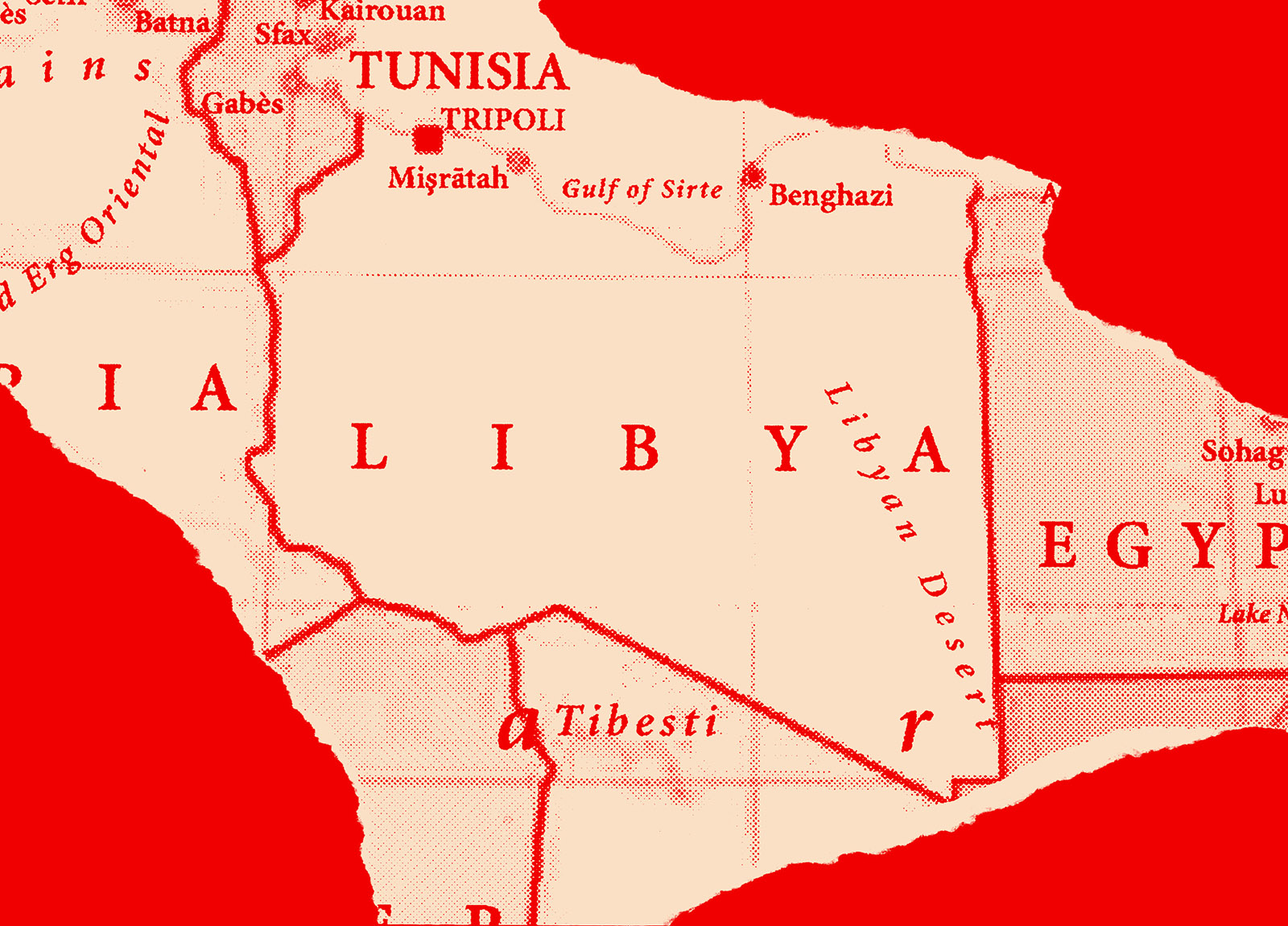Drawing on the testimony of rebels against Libyan leader Muammar Gaddafi, as well as that of Obama administration officials and other Western politicians, The New York Times in 2011 consistently invoked the specter of genocide in Kosovo and Rwanda in order to depict Gaddafi as a maniacal dictator on the verge of “slaughter” and as a “butcher.” The Times further alleged, in dozens of articles, that he was flying in African mercenaries and attacking civilians with warplanes. These were all lies, unverified in the moment and disproven since.
The Times largely ignored early attempts by the African Union and Gaddafi to negotiate a peace deal with the rebels, instead characterizing him as a tyrant hell-bent on massacring Libyans. Also left unreported were the United States’ and NATO’s strategic interests in Libya and North Africa. By the 2000s, Gaddafi, for all his quixotic nature, was a leader in organizing African nations against expanding U.S. presence on the continent, in the form of its new African military command, AFRICOM. He had also nationalized Libya’s rich oil and natural-gas reserves when he took power in 1969.
The Times, however, framed U.S. and NATO interest in Libya as fundamentally humanitarian and in defense of a population terrorized by a genocidal dictator. In one article published just days after the civil war erupted in mid-February, The Times weaponized this lie to imply that only military intervention would stop Gaddafi.
“With Colonel Qaddafi killing more of his people every day in a desperate bid to remain in power, it was not clear that [sanctions] would do much to mitigate the worsening crisis,” read the piece.
Another front-page Times article, from early March 2011, again called implicitly for an armed response. “Western nations took new steps to isolate the Qaddafi government,” wrote the publication, “but the measures stopped well short of any sort of military intervention and seemed unlikely to be able to reverse the momentum.”
In that same piece, The Times newsroom stressed the urgency of military measures, writing of a “race against time” to secure a “no-flight zone to blunt Colonel Qaddafi’s offensive.” The editorial board, hawkish as ever, cheered on the NATO operation, surely pleased that its own suggestion of a no-fly zone had been adopted.
By the time the Gaddafi government fell in August 2011, The Times had published nine editorials in support of the intervention.

In the years since, Libya has hosted violent civil wars and become a stronghold for ISIS-style extremism. The quality of life in a once stable, industrializing society has declined rapidly. In 2011, Libya had the highest standard of living in Africa, as measured by the Human Development Index (HDI). In 2021, it was the only African country apart from war-torn South Sudan whose HDI had decreased from the previous year.
Nearby countries such as Mali have also been destabilized by the fighting in Libya. And rebel victories in Libya ended up producing open-air slave markets, a revelation which has shocked the Western world — none of whose leaders have taken responsibility for the calamity their governments created.
In 2016, The Times published a profile of Hillary Clinton that doubled as a Libya postmortem, spinning orientalist tropes while presenting U.S. foreign policy and its stewards, like Clinton, as fundamentally well-intentioned.
According to The Times, “Clinton’s deep belief in America’s power to do good in the world ran aground in a tribal country with no functioning government, rival factions and a staggering quantity of arms.”
The Times continued to repeat the groundless story that Gaddafi had been on the verge of perpetrating a genocide, giving Clinton the false excuse that in Libya she had prevented another Srebrenica. The publication and Clinton held the same interest: obscuring their roles in the destruction of a country.


